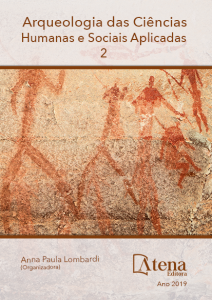
O PATRIMÔNIO URBANO E ARQUITETÔNICO DA PEQUENA CIDADE DO OESTE PAULISTA: DA PERCEPÇÃO DO LUGAR PRATICADO AO PROJETO DE INTERVENÇÃO
O artigo discute uma experiência de
ensino desenvolvida com alunos do quarto ano
de arquitetura e urbanismo da Universidade
Estadual Paulista “Júlio de Mesquita
Filho”, Câmpus de Presidente Prudente,
na disciplina Técnicas Retrospectivas, em
2016. Os procedimentos metodológicos
utilizaram instrumentos perceptivos e práticas
socioespaciais para construir hipóteses de
intervenção sobre o patrimônio urbano e
arquitetônico da pequena cidade do interior
do oeste paulista, Indiana. Para isso, fez
o reconhecimento do lugar vivenciando as
sensações das atmosferas percebidas através
das derivas realizadas no centro histórico.
As hipóteses de intervenção revelaram
preocupações em qualificar as apropriações
existentes dos espaços livres, abertos e públicos,
como ponto fundamental para a preservação do
patrimônio, valorizando o potencial de uso dos
espaços e seus significados, conduzindo para
a ativação do lugar, coerente com o cotidiano
das pessoas, proporcionando espaços de
permanência e convívio social. As ações
projetuais consideraram assim, não apenas
o objeto, mas também as relações que se
estabelece entre ele, a comunidade e a cidade.
O PATRIMÔNIO URBANO E ARQUITETÔNICO DA PEQUENA CIDADE DO OESTE PAULISTA: DA PERCEPÇÃO DO LUGAR PRATICADO AO PROJETO DE INTERVENÇÃO
-
DOI: 10.22533/at.ed.50619160122
-
Palavras-chave: técnicas retrospectivas, percepção, intervenção projetual, ativação, patrimônio industrial.
-
Keywords: retrospective techniques, perception, project of intervention, activation, industrial heritage.
-
Abstract:
The article discusses a teaching
experience developed with students of the
fourth year of architecture and urbanism of
the Universidade Estadual Paulista “Júlio de
Mesquita Filho”, campus of Presidente Prudente
in the subject Retrospective Techniques, in 2016.
As methodological procedures were employed
perceptive instruments and socio-spatial acts to
subsidize hypothesis of intervention on the urban
and architectural heritage of a small city in the
countryside of western São Paulo, Indiana. To
achieve this, they made the recognition of the site
experiencing the sensations of the atmospheres
perceived through the derives in the historic
center. The hypothesis of intervention revealed concerns about qualifying existent appropriation of the open and public spaces as
fundamental aspect for the preservation of heritage which value the potential of use
the spaces and their meanings, driving to a activation of the place, compatible with the
daily life of the people, providing spaces of stay and social interaction. To the project
actions were considered not only the object, but the relations established with it, the
community and the city
-
Número de páginas: 15
- Helio Hirao


